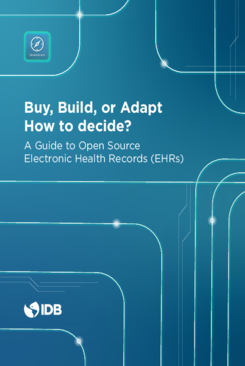Buy, Build, or Adapt: How to Decide?: A Guide to Open Source Electronic Health Records (EHRs)
Date issued
Jul 2019
Subject
Open Data;
E-Health
JEL code
O31 - Innovation and Invention: Processes and Incentives;
O34 - Intellectual Property and Intellectual Capital
Category
Learning Materials
The term “open source” was coined in 1998 to describe freely available software that allowed for collaboration following certain principles. Over the last 20 years, projects and businesses worldwide have become open source, using those principles and software as the foundation of practices that have changed the way information is managed, including in health care. This report is for those who want to learn more about open source software (OSS) and the benefits of its use in health care, with particular emphasis on electronic health records (EHRs).
The report describes what OSS is, where it is used, and what the differences are between OSS, open standards, and open data. It then describes the benefits and disadvantages of open source versus proprietary EHRs and the considerations for deciding between them. Through the report, you can learn about how many countries in Latin America and the Caribbean (LAC) have promoted OSS in their laws and experiences in the region.
The report describes what OSS is, where it is used, and what the differences are between OSS, open standards, and open data. It then describes the benefits and disadvantages of open source versus proprietary EHRs and the considerations for deciding between them. Through the report, you can learn about how many countries in Latin America and the Caribbean (LAC) have promoted OSS in their laws and experiences in the region.



